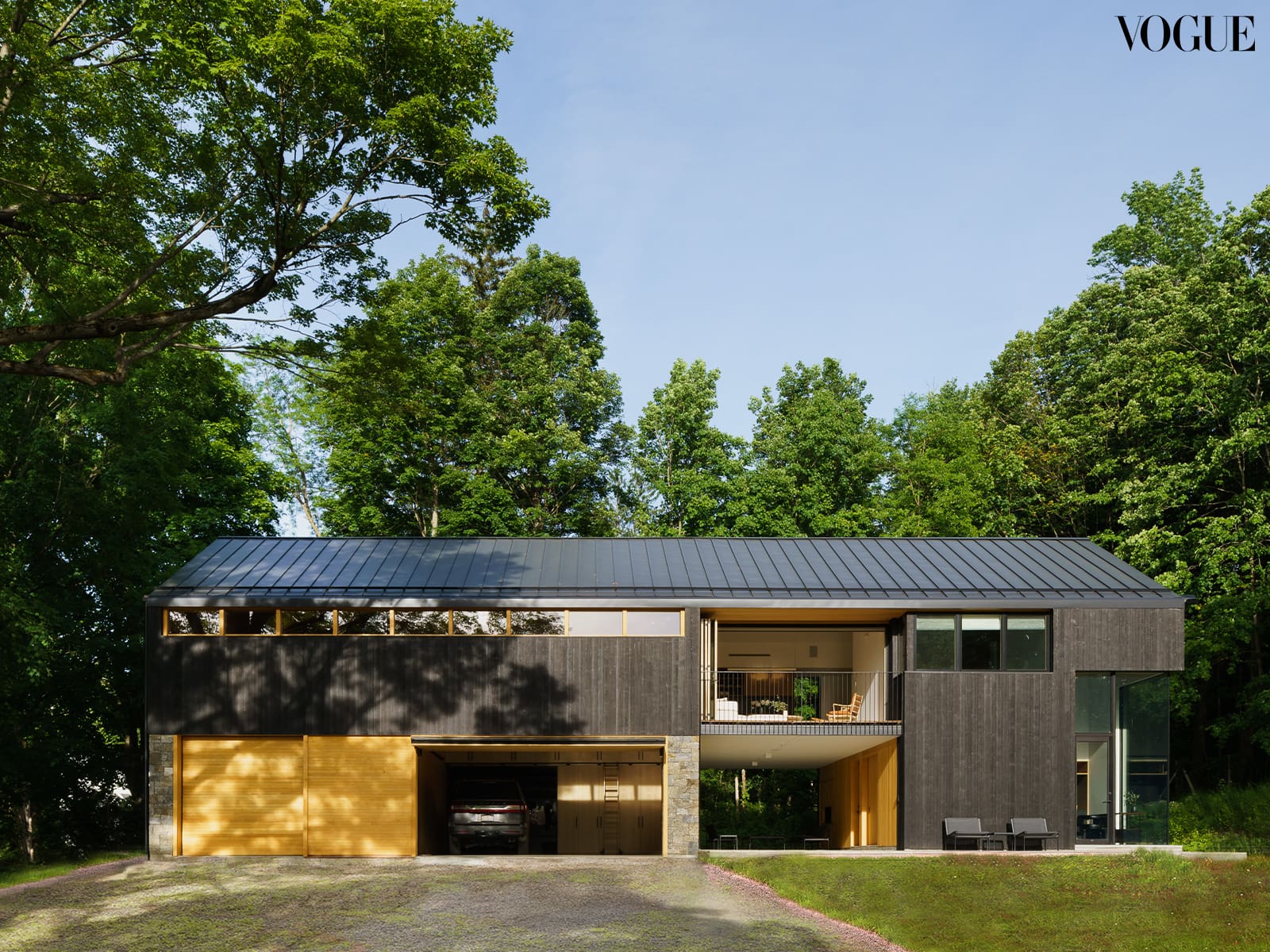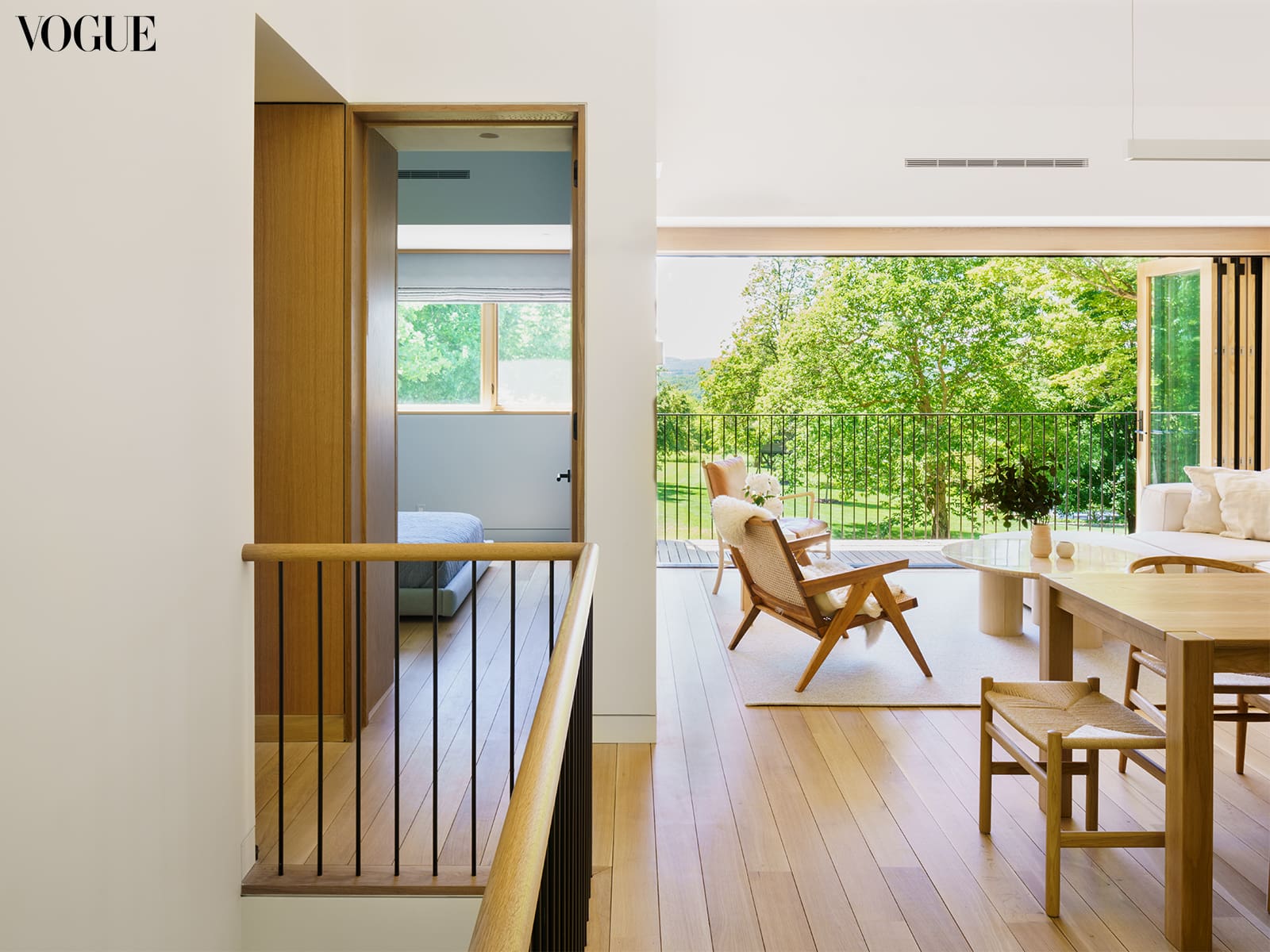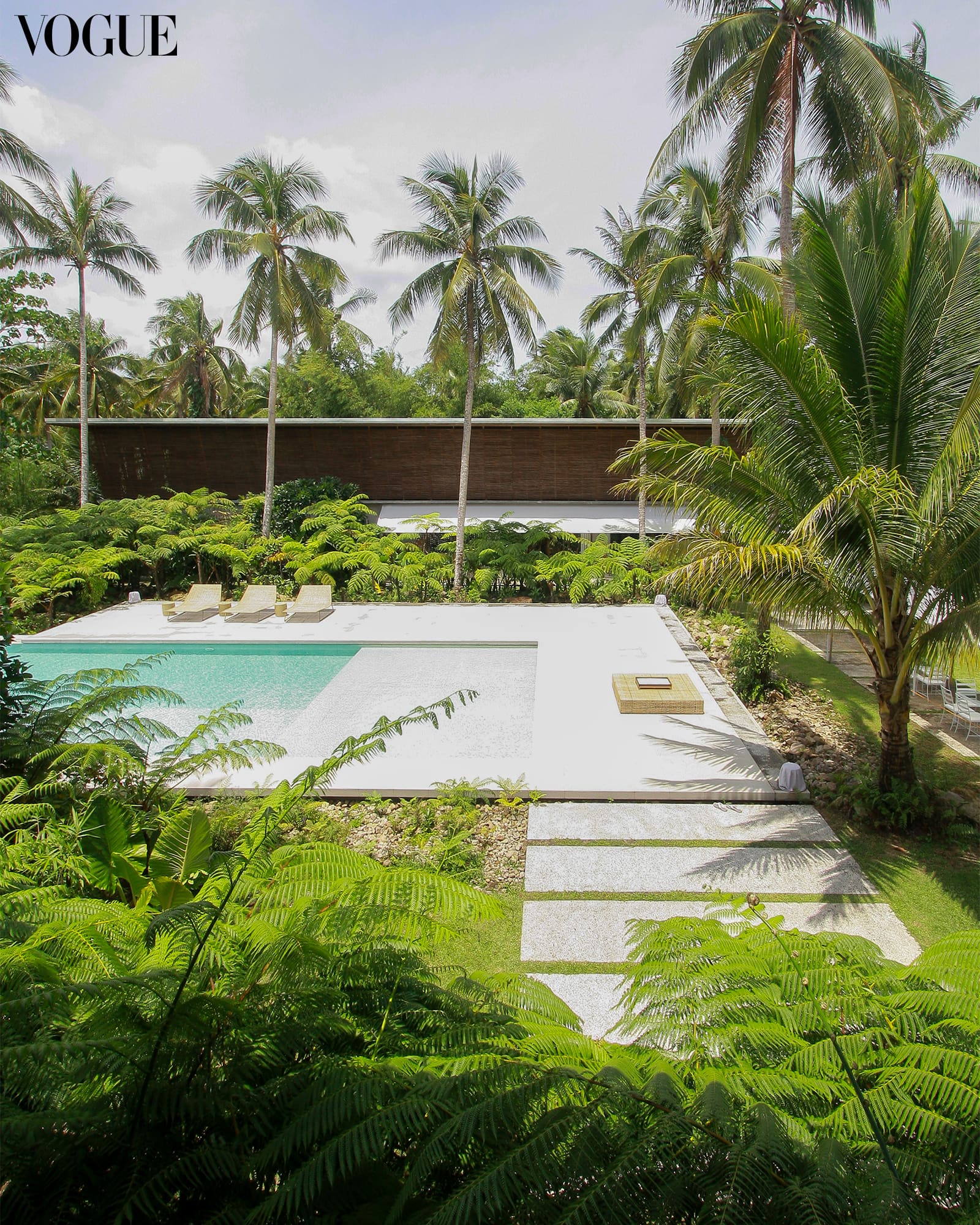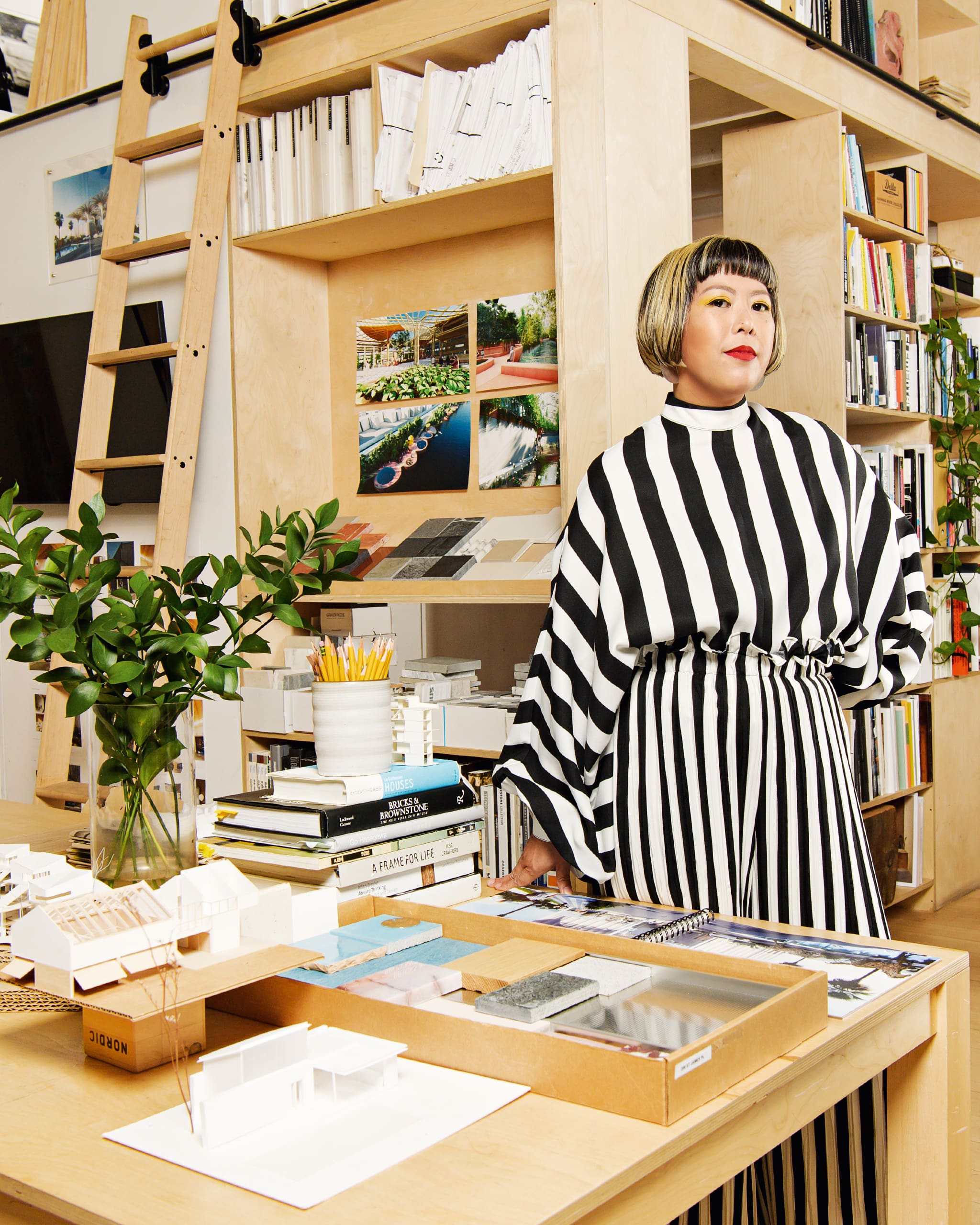Photo by KURT ARNOLD
From contemplative homes to playful urbanscapes, Brooklyn-based architect Aya Maceda draws upon the concept of “maaliwalas,” making spaces that breathe. The ebullient cofounder of ALAO walks us through a heartfelt body of work: joyful, worldly, and distinctly Filipino.
Picture your earliest memories. Can you recall the first house you lived in? The floor where you took your first steps?
Aya Maceda speaks in vivid detail of her family home in Quezon City: a collaborative effort by her mother, Teresita Gimenez-Maceda, and architect Jesus Gueco. “The whole house just breathed,” she says. “I remember the sense of exhale as you entered, being cocooned in this warm, bright space.”
Shaded under a large old talisay tree, its robust adobe-clad entrance offered a welcome arrival. A broad timber door opened into a thoughtfully planned inner sanctum, with narra and kamagong hardwood floors and walls. Places to gather and connect segued naturally into spots for quiet solitude. Bedrooms were positioned around a light-filled, double-height courtyard, inundated with greenery.
The house brimmed with Filipino art, objects Teresita collected in her travels, as an author and professor of Philippine Studies and Literature. Nicknamed Mapayapa, this peaceful environment instilled an early appreciation for space in young Aya, sparking a lifelong fascination for Indigenous heritage, design and creative expression. After 43 years in the Gimenez-Maceda family and with her mother’s passing, the house was recently sold. But the lessons learned within its walls remain alive in every project.
“Thinking of the values I seek to apply in my work, there is a direct line to my childhood home. I often find myself returning to it,” says Aya. “Our perimeter garden was full of orchids and ferns. My dad Vic had a habit of talking to plants… now I find myself doing that, too.” Fond memories of home served as a comforting anchor, as Aya’s physical base moved with her globetrotting architectural career.
Leaving Manila in 2000 after securing a two-year fellowship at a prestigious firm in Singapore, Aya then spent a decade working as an architect in Sydney. While travelling, she met her husband Kurt Arnold, and following the birth of their son, the pair began to consider a sabbatical in his hometown of Brooklyn, New York. A compelling factor in the move Stateside was Aya’s long-held dream to study at Columbia University, to learn from the leading architects and theorists she so admired. The young family relocated to the Big Apple to pursue this life-changing, challenging new chapter.

“After working in the profession for 12 years, the return to academia changed the way I thought about my purpose,” says Aya. “It made me want to work in a more multifaceted way—as an architect, a social advocate and an academic. I was curious about developing a body of work that was rooted in the social engagement of architecture.”
In 2013, in the same month she graduated from Columbia, a Sydney contact put forward a well-matched project, and Aya found herself at the helm of her own ship much earlier than she had envisioned. “Going out on my own was a project of autonomy,” says Aya. “I wanted to break away and find my own voice—be in a space where I could function freely as a creative.”
During this time, friend and furniture designer Milo Naval suggested a collaborative project, creating the meditative Siama Hotel on a coconut farm in Sorsogon. Placing local craftsmanship and artisan detailing at the fore, the boutique accommodation presents a tangible connection to community and nature. This considered, relationship-driven work aligns with Aya’s intent, to design as a medium for positive change.
With no network in New York, and only one project under her belt, her practice grew slowly, client by client. Soon, Aya built up a portfolio of memorable residences, art studios, community spaces and cultural projects. A bubbling aspiration to collaborate with like-minded creatives led to a partnership with architect James Carse, and the genesis of the award-winning ALAO in 2018. With James’ expertise colored by his New Orleans background, the two find dynamic professional synchronicity in “a type of tropical modernism.”
“We both subscribed to a humanist approach to design, and aimed to create architecture that allows people to feel joyful, and connected to a place,” says Aya.
This lies at the core of one of the practice’s most inventive and sustainably-driven civic projects, the floating parks of Pasig. Developed with CITEM (Center for International Trade Expositions and Missions), Mayor Vico Sotto and the Pasig Local Government, a visionary proposal for a modular parklet system which could move along the waterways, providing protected mangrove regeneration zones. The pocket parks also act as a nudge, the novel infrastructure encouraging a return to an ancient waterside lifestyle. As Aya points out, the very word “Manila” takes origin from “may nilad,” referring to the flowering mangrove plant once-abundant along the riverbanks.

“The project aims to reconnect us to our history and identity as riverine people, as ‘Tagalog,’ or taga-ilog,” Aya explains. A casual scroll of any internet borough reveals our insatiable appetite for all things “aesthetic”; the tightly curated, impactful visuals that rise to the algorithmic top. But the culture of online image worship often loses sight of experiential nuance. Instead, Aya’s work intentionally centers our physical experience of space, through the concept of maaliwalas.
“When we ask, what is the concept of ganda? I always associate beauty with the word, maaliwalas,” explains Aya. “This goes beyond a visual aesthetic—it is rather a felt aesthetic. It’s an experience of delight, pleasure, and ease. It’s that ‘ahh’ when you come into a space that is clear and free, open and flowing. ”
Importantly, “maaliwalas” is a non-western, pre-colonial term. Looking through this lens, as Aya has throughout her career, these principles are evident in Indigenous architecture and dwellings throughout the archipelago. Shared spaces, often one-room houses, where a connection to the outdoors is accessible from within. ALAO’s contemporary, research-based approach respectfully draws on this heritage to shape projects of varying scales and program.
Maaliwalas is gracefully exemplified in a major upcoming project, one Aya is palpably excited to reveal: the Cebu Institute of Contemporary Art & Design (CICAD). Empathetic and porous to its natural surroundings, this sprawling cultural hub is oriented to both the seaside and the mountainscape. Guests are invited to intuitively circulate the premises, meandering between inner galleries and outdoor plazas shaded by delicate canopies, always returning to open space; the breath that binds the building. Tiled patterns underfoot emulate specific geometric patterns found in indigenous weaving from the area. The seemingly random scroll of the inner roofline, appearing like the rippling line of a heartbeat, is in fact a curvilinear extrusion of flowing Baybayin script. Ingenious, intimate and entirely of its place. This is architecture that listens.

Whether in the Philippines or abroad, the prolific Aya Maceda continues to cultivate maaliwalas in her life and work, to great success. In 2022, ALAO was honored three American Institute of Architects awards in three separate jurisdictions—a proud team achievement. One of these, The Sharon Carriage House in Connecticut, embodies breathing space. Initially a run-down barn, the project brief grew as Aya got to know the young, active family. Its simple, refined structure establishes a seamless continuum between indoors and out, through generous openings and clerestory windows which imbue the space with a weightless quality. Built with ample storage for sports gear, recreational space and fluid functionality, it is a place for fun and respite befitting its bucolic setting.

While honoring her mother’s influence, Aya’s outlook is also indelibly marked by her own personal path through motherhood. She can sometimes be found sketching her two children, freewheeling in one of Brooklyn’s public parks. These leisurely family expeditions inform her role as Assistant Professor at Parsons School Of Design. Here, she teaches graduate-level design studios centered on curiosity and play for people of all ages, imagining practical ways to bring joy to city life.
“Observing how happy my kids are, maneuvering through urban spaces—it opened up my curiosity for designing small, intimate spaces, and spaces of play,” says Aya. “My identity as a mother, as a Filipino, as an architect, and as an academic—all of those layers reveal themselves in the work.”
Now, after more than two decades crafting bespoke projects and forever homes for clients all over the world, Aya and her family are happily building their own nest: an idyllic cabin in the woods, in upstate New York. Airy, restful and alive to its leafy setting, the work-in-progress is maaliwalas manifest. Lovingly reminiscent of Mapayapa, a home for many memories to come.
